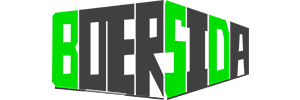The seismic design of the data center server cabinet is an important line of defense to protect equipment safety and data stability in response to sudden vibrations. Through structural optimization, material selection and connection reinforcement, the impact of vibration on the data center server cabinet and internal equipment can be reduced from multiple dimensions, and potential losses can be controlled to the minimum range.
The rigid structural design of the main body of the data center server cabinet is the first barrier to resist vibration. The frame made of high-strength steel can maintain the overall shape stability when vibration occurs, and is not easy to twist or deform. The joints of the frame are reinforced by welding or bolts to form a rigid whole, so that the vibration energy is dispersed and absorbed by the frame structure during the transmission process, avoiding excessive local force causing the data center server cabinet to fall apart. This rigid design ensures that the data center server cabinet will not fall over during vibration, providing a relatively stable bearing space for internal equipment to prevent the equipment from being squeezed or hit due to the collapse of the data center server cabinet.
The fixtures of the internal equipment are the key details of the seismic design. The servers, switches and other equipment inside the data center server cabinet are fixed to the frame through special slides or buckles. These fixtures can lock the equipment tightly during vibration to prevent it from shaking or colliding in the data center server cabinet. The part where the slide rail contacts the equipment is usually equipped with an anti-skid pad or rubber buffer layer, which can not only enhance the friction, but also absorb some energy during vibration, reducing the hard impact between the equipment and the data center server cabinet. For heavy equipment, a multi-point fixing method is also used to apply restraint force from the top, bottom and side at the same time to ensure that the equipment can remain in place during vibration in all directions, avoiding the fall of components or loosening of interfaces due to displacement.
The connection method between the data center server cabinet and the ground further enhances the earthquake resistance. The bottom of the data center server cabinet is firmly fixed to the embedded parts on the ground by expansion bolts, which can prevent the data center server cabinet from sliding or tipping over as a whole during vibration, especially in horizontal vibration. This fixing method can provide a strong anchoring force for the data center server cabinet, making it a stable reference point, reducing the possibility of shaking of internal equipment due to the movement of the data center server cabinet. Some data center server cabinets will also install shock-absorbing pads at the bottom. These shock-absorbing pads are made of elastic materials and can absorb the vibration energy transmitted from the ground, play a buffering role, weaken the vibration intensity of the data center server cabinet, and indirectly reduce the force on the internal equipment.
Anti-seismic protection of cable connections is an important part of ensuring the continuity of equipment operation. The cable management system of the data center server cabinet will organize and fix the power cables and data cables, use cable ties, cable troughs or cable management racks to arrange the cables in order, and use locks or anti-slip sleeves at the interfaces to prevent the cables from falling off or the interfaces from loosening during vibration. For important connection points, redundant designs will also be adopted. Even if a certain interface has poor contact due to vibration, the spare interface can still remain connected to ensure uninterrupted data transmission. This protection of cables avoids communication interruptions caused by vibration and allows the equipment to quickly resume normal operation after vibration.
The application of shock-absorbing and buffering materials can effectively absorb vibration energy. Shock-absorbing cotton or foam pads are pasted on the side panels and inner side of the door panels of the data center server cabinet. These materials have good elasticity and energy absorption characteristics. When vibration causes the equipment to collide with the inner wall of the data center server cabinet, they can play a buffering role and reduce the damage of the impact force to the equipment shell and internal components. Some data center server cabinets reserve a small gap between the frame and the panel and fill it with elastic material to allow the panel to have a slight displacement space when vibrating. The deformation of the material absorbs energy, avoids the panel from breaking due to rigid collision, and reduces the noise.
The indirect protection of the internal components of the device by the anti-seismic design should not be ignored. Vibration may cause the hard disk, fan and other precision components inside the device to loosen or be damaged. The anti-seismic design of the data center server cabinet reduces the risk of damage to these components by reducing the intensity of vibration transmitted to the device. For example, the hard disk is prone to head collision with the disk during vibration. The vibration reduction measures of the data center server cabinet can control the vibration amplitude transmitted to the hard disk within a safe range to protect the integrity of data storage; if the fan deviates from its original position due to vibration, it may affect the heat dissipation efficiency. The stable environment of the data center server cabinet can reduce this risk and ensure the normal operation of the device's heat dissipation system.
The center of gravity control of the overall structure helps to improve the stability of the data center server cabinet during vibration. The center of gravity of the data center server cabinet is minimized during design. By properly arranging the installation positions of the internal equipment, the top is prevented from being too heavy, which may cause the center of gravity of the data center server cabinet to shift during vibration and increase the risk of tipping. At the same time, the width and depth ratio of the data center server cabinet is optimized to form a stable support structure, which can maintain balance in vibrations in all directions and reduce the amplitude of shaking. This center of gravity control and structural ratio optimization make the data center server cabinet like a stable base during vibration, providing continuous protection for internal equipment.
In addition, the seismic design can also reduce the impact of vibration on the overall environment of the data center. The stability of a single data center server cabinet can prevent it from hitting adjacent data center server cabinets during vibration, and prevent the vibration from spreading between data center server cabinets and forming a chain reaction. Through the independent seismic resistance of each data center server cabinet, the seismic resistance system of the data center is jointly constructed, so that local vibration will not cause large-scale equipment damage, ensuring the stable operation of the entire data center and providing solid protection for business continuity.


